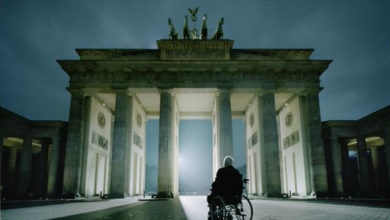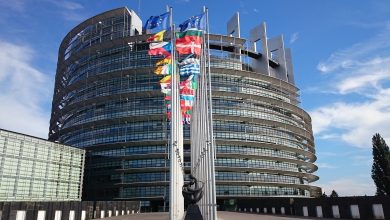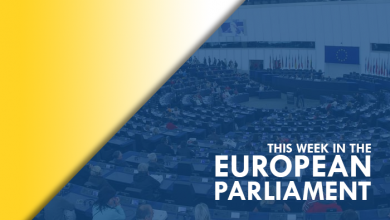The Other Side of Europe: Ukraine

‘The Other Side of Europe’ is an article series providing information about the EU European (geographically or culturally) neighbour countries located between Eastern Europe and the Caucasus. It follows a series in which we explored opportunities for future enlargement. In this first instalment, we will look at Ukraine.
Geography and Culture of Ukraine
Ukraine is located between the Black Sea and the Sea of Azov, and shares a border with multiple European countries: Poland, Slovakia, Hungary, Belarus, Moldova, Romania and Russia. This is due to the country’s large size: Ukraine spans across 603,550 sq. km, with a population of 42,418,235 citizens. Most of its national territory is made of great, flat expanses, crossed by large rivers like the Dnieper and the Don.
The city of Kyiv serves as the cradle of Ukrainian culture and national history. The capital and its surrounding areas formed the epicentre of the Kievan Rus’, although the city then knew centuries of diminished political clout after the Mongol invasion. In spite of its woes, Kyiv maintained its position as a centre of the Orthodox faith and a crucial trade node. The capital has undergone an important resurgence since Ukraine’s achievement of independence in 1991. Ukrainian traditions are, of course, heavily influenced by the Eastern Orthodox Church and many holidays, like Christmas and New Year’s Eve, are still based on the ancient Julian Calendar.

During their history, Ukrainians had to endure occupation and domination by many foreign powers, who nevertheless never succeeded in eradicating the country’s national identity. One of the crucial unifying factors was the language and its alphabet – a variant of the standard Cyrillic script and a symbol of national identity. The Ukrainian language derives from Old East Slavic, the official language of Kievan Rus’. Initially, it was called Ruthenian.
Modern Ukrainian has a more recent history, being developed in the late 17th century during the Cossack Hetmanate. From 1804 until the Russian Revolution, the teaching of Ukrainian was banned from several schools throughout the Russian Empire. Nevertheless, it maintained a sufficient speakers’ base in Western Ukraine, where the language was not prohibited, above all for traveling musicians and literary authors. The standard Ukrainian language is regulated by the National Academy of Sciences of Ukraine (NANU), by its Institute for the Ukrainian Language, the Ukrainian language-information fund, and the Potebnya Institute of Language Studies. The Ukrainian language retains a degree of mutual understandability with Belarusian and Russian.
Another staple of Ukrainian culture is hopak, usually referred to as the national dance of Ukraine. It’s a folk dance, deriving from a traditional dance of the Zaporozhian Cossacks. This was originally reserved only for men, but the Ukrainian variant is but also danced by couples and groups. Ukrainian culture also includes typical food. The most renowned and typical dishes are Kolbasa, a particular kind of sausage, as well as head cheese and bread. Among the most traditional dishes one can also find borscht, a soup of red beets, and chicken kyiv. Pierogi and pilaf must of course be mentioned. Kutia is a traditional Christmas dish, usually served with a mixture of cooked wheat groats, honey and poppy seeds. For Easter it is very common to prepare pysanky.
Society and Religion
Ukraine is a multi-ethnic country. Ukrainians are 78% of the population, with the biggest minorities being Russians (17.3%), Belarusians (0.6%), Moldovans (0.5%) and Crimean Tatars (0.5%). Other ethnic groups include Bulgarians, Hungarians, Romanians, Poles, Armenians and Greeks. As in other former Soviet territories like the Caucasus, Ukraine is home to between 50,000 and 100,000 Koreans that belong to the Koryo-Saram minority. About 73% of the population is Orthodox, albeit adhering to different Patriarchates. Catholics are mostly concentrated in the western regions, and make up 9.4% of the population. Many Ukrainians (11%) declare themselves as non-religious or unaffiliated. The highest number of Muslims and Hinduists lives in the Donbass region.

An anomaly is represented by the Crimean Tatars, who profess Islam. Unsurprisingly, they mostly present in Crimea, which has been under illegal Russian occupation since 2014. Another cult present in Ukraine is Rodnovery, the native Slavic faith. Only about 0.1% of the population declare themselves as Pagan, with a higher proportion in the central part of the country. The Book of Veles, the main philosophical text from the Rodnover “churches,” is still present in Ukrainian school curricula. Rodnovery has also played a significant role in the War in the Donbass. The Rodnovers, in this case, are split between the pro-Ukrainian Azov Battalion (where they are the majority) and the pro-Russia Svarog Battalion. After the occupation, Russian Rodnovers reorganised some local villages according to Indo-European trifunctionalism – a doctrine which establishes that men are born to be priests, warriors or farmers.
Economic Context
Ukraine is an emerging free market. As with other post-Soviet countries, GDP grew rapidly between 2000 and 2008. Starting with the momentous financial crisis of 2008, Ukraine’s economy alternated periods of strong growth with periods of crisis, although a more comprehensive economic recovery began in 2016. Nevertheless, the Russian invasion of Crimea has damaged Ukraine’s economy and industry. Ukraine is an industrialised country, with the secondary sector accounting for 26% of GDP in 2012. Ukraine is richly endowed with minerals, and their extraction results in a large share of industrial activity. Coal reserves in Ukraine amount to 47.1 billion tons, and almost 85% of the demand for coal and fuel can be satisfied by domestic production. Moreover, during the Soviet era, Ukrainian iron production accounted for 50% of the entire Soviet output of iron. The numbers are even more impressive with manganese: Ukrainian production in the 20th Century amounted to 40% of the entire world’s output.
According to a report published in 2012, Ukraine is the world’s tenth largest steel producer, as well as the sixth largest weapons trader worldwide However, Ukraine imports 90% of its oil and a majority of its natural gas. The country’s dependence on Russian gas exports makes it vulnerable to political blackmail from the Kremlin, and it crucially affects Ukrainian economic and foreign policy. After the occupation of Crimea, Ukraine sought closer ties with the United States and the European Union. Ukraine is a partner in the EU INOGATE energy programme, and working on four key aspects: supporting sustainable energy development, attracting investment for energy projects, convergence of Member State energy markets on the basis of internal energy market and enhancement of energy security.
State of relations between Ukraine and EU
Relations between the EU and Ukraine have known ups and downs, but they’ve been intensifying ever since the rising preponderance of Russian military aggression. Ukraine is considered a priority partner for the EU within the Eastern Partnership and the European Neighbourhood Policy. The DCFTA Association Agreement and the Deep and Comprehensive Free Trade Area had been initiated in 2012, but in 2013 the preparation was suspended by pro-Russian president Viktor Yanukovych.

This decision sparked the Euromaidan protests and resulted in a unanimous vote by parliament to remove Yanukovych from power in 2014. After that, the first part of the association agreement was signed on 21 March 2014 by the new prime minister, Arseniy Yatsenyuk, while the economic part of the deal was signed on 27 June 2014 by new President Petro Poroshenko. From 1 September 2017, Ukrainian citizens have been granted visa-free travel to the Schengen Area for up to 90 days.
The Road Ahead
The ongoing Russian military occupation of the Oblasts of Donestk and Lugansk, as well as Crimea, place important obstacles on Ukraine’s path towards Euro-Atlantic integration. Neither of these occupations are recognised by the United Nations, NATO or the EU, and there is little doubt that they are absolutely incompatible with international law. Nevertheless, de facto these three territories are not currently under Kyiv’s control. From December 2015, the entire region of Crimea has been linked with the Russian power grid, and Crimeans have been voting in Russian elections after the occupation.
Ukraine’s new president Zelens’kyj has triumphed in the 2019 presidential elections with an overwhelming majority (70% in the second round against Poroshenko), but the appeal of his platform has so far been determined by its vagueness. His campaign has been focused on “goals” which almost everyone could agree on, like the fight against corruption, but with a complete lack of specific proposals. This attitude led to a great uncertainty about the new Ukrainian leadership and the choices it will make – among other things, one would be pressed to determine whether the new president is pro-Russian or pro-European. He has repeatedly expressed his willingness to meet with Vladimir Putin in order to solve “the problem of the Donbass”, but it is impossible to understand what this means or when it is supposed to happen, since the Kremlin will consider a meeting only after the “normalisation” of the relations with Ukraine.
The situation is further complicated by the political climate in the Oblasts of Donetsk and Lugansk, which are not part of the pro-Russian autonomous “republics” and are currently under Russian occupation, but did not boycott the elections. Yuriy Boyko, Yanukovych’s former Minister of Fuel and Energy and an outspoken supporter of Moscow, has emerged as the frontrunner candidate from those two Oblasts. Ukraine is a country hampered by deep internal divisions, and prospects for their resolution are currently unclear.





